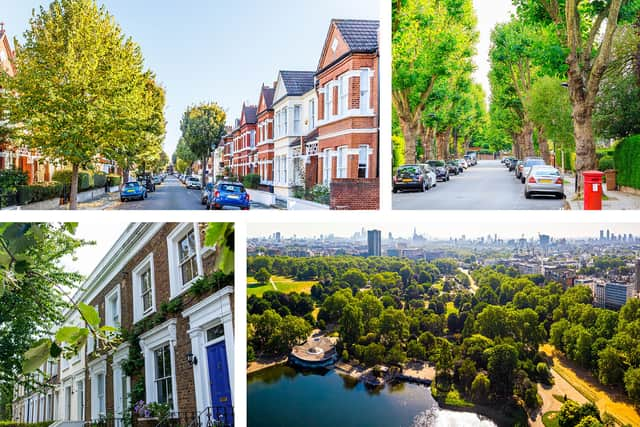Interactive map shows which English areas have fewest trees - as charity slams ‘woeful’ tree-planting targets
and live on Freeview channel 276
England’s “woefully inadequate” tree planting targets must double by 2050 to help tackle the climate crisis, with a focus on planting in the most deprived parts of the country, a new report has warned.
Analysis by charity Friends of the Earth shows just 12.8% of England is currently covered by trees, with woodland areas covering 10% – far lower than the 38% of land that is covered by woodland in the European Union. The charity says the government’s existing goal for boosting tree numbers would see tree cover rise to just 16.5% by 2050 – still significantly lower than average levels across the EU.
Advertisement
Hide AdAdvertisement
Hide AdThe campaigners said a more “ambitious” target is needed to boost tree numbers, which would benefit the interlinked climate, nature and public health crises. It also claimed it would stop reliance on timber and wood imports from the likes of Russia and China, which have a “devastating” impact on the environment.
Poorer communities are much more likely than wealthier ones to be missing out on the advantages brought by trees, the charity said, which can include temperature regulation during heatwaves, better air quality through filtering pollution, and improved mental health.


The figures come as part of a highly detailed analysis of England’s tree coverage by mapping experts Terra Sulis for Friends of the Earth. Using newly available laser imaging, lone trees and street trees around the country have been able to be identified to show the full scale of England’s tree coverage for the first time.
Previous research has only accounted for woodland trees and those clustered in smaller groups. The results of the analysis are available in an interactive map showing tree coverage across England, as well as areas that have rewilding and woodland opportunities. You can click and drag the map below and search for a postcode or click on area names to see how tree coverage compares.
Loading....
Poorest communities lacking in tree coverage
Advertisement
Hide AdAdvertisement
Hide AdThe analysis highlighted the wide geographical imbalances in tree coverage, with poorer communities missing out. Overall, almost half (43%) of neighbourhoods in England have less than 10% tree canopy cover.
South Holland in Lincolnshire was found to have the lowest tree cover in the country at only 2.2%, while Surrey Heath in Surrey ranked the highest with 36.1%.
The charity said the government should prioritise tree planting in deprived areas after the study revealed the poorest neighbourhoods in England had significantly fewer trees than in wealthier communities, based on analysis using the Office for National Statistics (ONS) rankings of deprivation. Tree cover stood at just 9.5% in the neighbourhoods that ranked among England’s bottom 10% most deprived, rising to 17.5% in the least deprived areas.
Thanet , where 20% of neighbourhoods rank in the poorest 10% nationally, had the ninth lowest tree coverage nationally, at only 5.2%.
Loading....
Boosting tree numbers
Advertisement
Hide AdAdvertisement
Hide AdMike Childs, head of science, policy and research at Friends of the Earth, said: “Current targets for tree planting are woefully inadequate and overlook the devastating impact that timber and wood imports from countries such as Brazil, China and Russia wreak on nature globally.
“We need many more trees for farming, urban cooling and absorbing harmful carbon emissions. There’s more than enough viable land to increase cover two-fold without compromising quality agricultural land or protected habitats. The government must get behind a far more ambitious plan to boost tree numbers and adopt this as an official target.” The UK government has not set a target for neighbourhood tree cover.
A spokesperson for the Department for Environment, Food and Rural Affairs (DEFRA) said: “This Government has committed to a five-fold increase in average tree planting rates which will boost the numbers of trees close to where people live and in some of the most nature deprived parts of the country.
“As set out in the England Trees Action Plan, increasing tree and canopy cover across England is part of our plan to tackle the impacts of climate change and the biodiversity crisis, and £650m of Nature for Climate funding is kickstarting our progress through targeted grants like the Urban Tree Challenge Fund which will see planting and establishment of trees in urban areas.”
Comment Guidelines
National World encourages reader discussion on our stories. User feedback, insights and back-and-forth exchanges add a rich layer of context to reporting. Please review our Community Guidelines before commenting.
